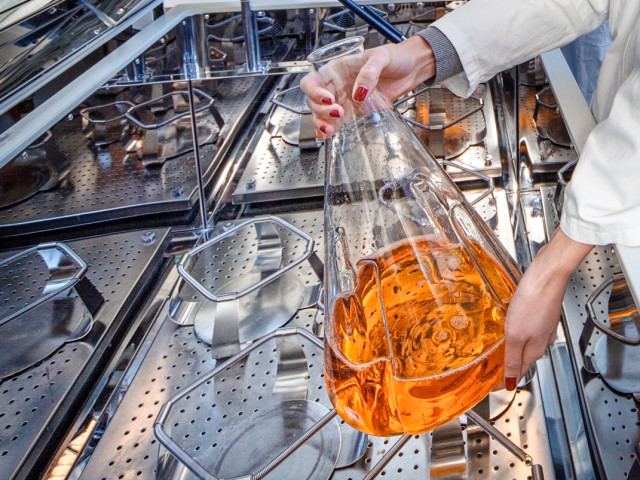The course gives an overview of chemical processes that employ catalysts to control the emissions of environmentally unacceptable compounds and the course also covers processes which eliminate the formation of such substances. A special emphasis will be put on abatement of emissions from mobile sources. New and emerging catalytic technologies will be given special attention. The general concepts will be covered in lectures, while detailed studies will be performed in supervised seminar assignments. The assignments cover current problems in industry or in the society. These will be presented orally at seminars as well as in a technical paper. The entire course is given in English.
KE2050 Environmental Catalysis 6.0 credits

The course gives an in-depth knowledge of modern emission reduction technologies using catalytic methods. The course includes subjects such as characterization of emissions, health effects, introduction about internal combustion engines and their history, pollutant formation, test cycles, emission standards, influence of fuel on emissions, motor fuel history, exhaust gas catalysts for different kinds of vehicles, control of stationary emissions (VOC, NOx, SOx), design of units for abatement of nitrogen oxides and VOC, catalytic combustion, production of motor fuels with low content of sulfur and aromatics, hydrogen generation from various fuels for fuel cell vehicles and for emission abatement, market aspects, and green production.
Information per course offering
Course offerings are missing for current or upcoming semesters.
Course syllabus as PDF
Please note: all information from the Course syllabus is available on this page in an accessible format.
Course syllabus KE2050 (Spring 2019–)Content and learning outcomes
Course contents
Intended learning outcomes
The overall aim of the course is to develop skills to creatively solve air pollution problems in industry or in the society by either abating the emissions of environmentally unacceptable compounds or employing processes which eliminate the formation of such substances.
After approved course you should be able to
• characterize the most important emissions of hazardous compounds and their health effects
• propose a suitable method to reduce emissions of hazardous substances from mobile or stationary sources from given data
• explain the function of spark-ignition engines and diesel engines and how emissions are formed in these engines both emanating from fuel and from combustion principle
• choose a suitable emission reduction technology for contemporary low-emission vehicles
• explain the role of the catalyst in environmental catalysis and identify its constraints
• explain how commercial catalysts are prepared
• describe the most important methods for abatement of volatile organic compounds and nitrogen oxides in stationary applications
• describe the production of low-sulfur fuels by ultra-deep hydrodesulfurization
• explain how to generate hydrogen from various fuels and how to utilize hydrogen in mobile applications including fuel cell systems
• explain the concept of green production
• write a consistent literature report in English on a subject related to environmental catalysis
• present your ideas and findings in oral form and discuss the results
Literature and preparations
Specific prerequisites
Admission requirements for independent students:
75 university credits (hp) in chemistry or chemical engineering, 20 university credits (hp) in mathematics and 6 university credits (hp) in computer science or corresponding. Documented proficiency in English corresponding to English B.
**Admission requirements for programme students at KTH:
**At least 150 credits from grades 1, 2 and 3 of which at least 110 credits from years 1 and 2, and bachelor's work must be completed, within a programme that includes:
75 university credits (hp) in chemistry or chemical engineering, 20 university credits (hp) in mathematics and 6 university credits (hp) in computer science or corresponding.
Recommended prerequisites
KE1020 Reaction and separation engineering
or
MF2015 Combustion Engines, general course
or
MF2016 Combustion Engines, advanced course
or corresponding knowledge.
Literature
Heck, R. M.and Farrauto, R. J. Catalytic Air Pollution Control, 2nd ed., John Wiley, New York, 2002, kompletterat med utdelade aktuella vetenskapliga artiklar.
Examination and completion
Grading scale
Examination
- ÖVN1 - Seminars, 3.0 credits, grading scale: P, F
- TEN1 - Examination, 3.0 credits, grading scale: A, B, C, D, E, FX, F
Based on recommendation from KTH’s coordinator for disabilities, the examiner will decide how to adapt an examination for students with documented disability.
The examiner may apply another examination format when re-examining individual students.
If the course is discontinued, students may request to be examined during the following two academic years.
Other requirements for final grade
Examination (TEN1; 3 credits)
Seminar (ÖVN1; 3 credits)
Examiner
Ethical approach
- All members of a group are responsible for the group's work.
- In any assessment, every student shall honestly disclose any help received and sources used.
- In an oral assessment, every student shall be able to present and answer questions about the entire assignment and solution.
Further information
Course room in Canvas
Offered by
Main field of study
Education cycle
Supplementary information
The course is also offered to PhD students with the code 3C5619